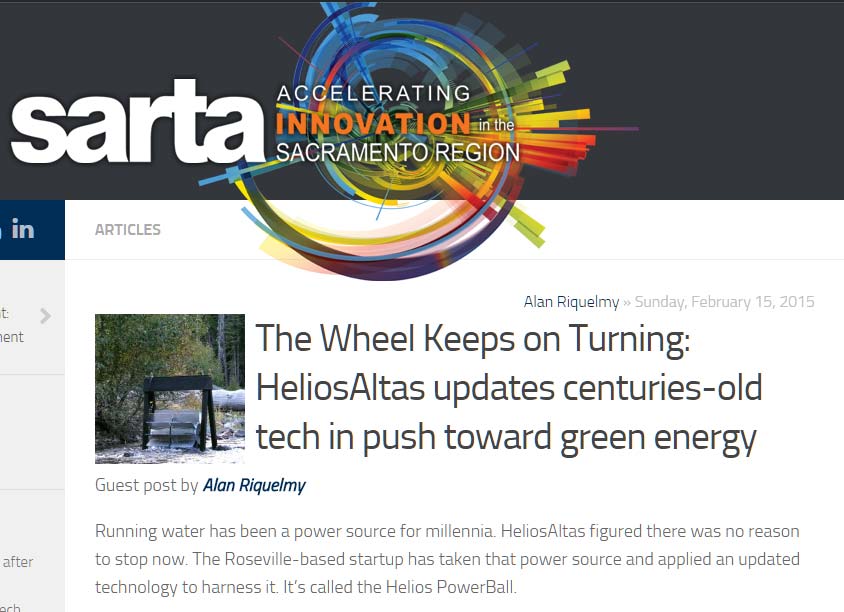Running water has been a power source for millennia. HeliosAltas figured there was no reason to stop now. The Roseville-based startup has taken that power source and applied an updated technology to harness it. It’s called the Helios PowerBall.
The inventor of HeliosAltas‘ technology is vice president Phil Chauvin, and it’s the company’s main foray into the green energy market. “Our hydrocarbons are a finite resource,” said Michael Carroll, CEO of HeliosAltas. “A practical way to get energy from nature to me makes the most sense.”
The PowerBall is the 21st century’s answer to the waterwheel. The concept is the same: moving water spins the wheel, creating pressure and speed that turns a generator and provides kilowatts, even megawatts, of electrical energy. The PowerBall, however, is unique. It requires as little as 6 inches of fall – elevation change – to work. Carroll said other hydroelectric technologies need a much larger fall and body of water. “What that means is that we’ve opened up a huge chunk of the hydroelectric market that was previously not accessible,” Carroll added.
The idea came to Chauvin as he worked in the mid-90s as a member of an electrical crew. He’d often work alongside canals, watching the water rush past. One day he spotted a rusted shaft and thought it may have been from a waterwheel. The object ultimately led to his idea for the PowerBall. “Why wouldn’t you want to harness that kinetic energy?” Chauvin asked. “I think it’s a simple, elegant technology.” The PowerBall complements nature, Chauvin said. He wants to tap resources that provide clean and sustainable energy.
Green energy also has been a hobby of Carroll’s for years. He has a background with two different oil and gas companies, where he managed their global operations. He knows the combustion process, the byproducts it creates and what they do to the atmosphere. He also knows that we will keep making more of those byproducts as society advances. That’s led Carroll to his core philosophy – making zero emission energy at the same cost or less than existing technologies. According to Carroll, that’s what the PowerBall will do.
HeliosAltas might never have come about if not for a mutual friend introducing Carroll to Chauvin. Carroll said he has the business background; Chauvin has the technical knowledge. They merged their two companies in October 2014, and now work together in their push toward green energy.
The PowerBall isn’t for a typical homeowner. It’s pricing and government regulations currently make that difficult, though Carroll intends to bring the tech’s prices down over time. His existing customers include international distributors, as well as local pilot projects. A 1-kilowatt unit currently costs $6,000. It can provide 23-24 kilowatts per day. A typical home uses 30 kilowatts each day, Carroll said. “We have a package to take you completely off the grid,” he added.
HeliosAltas’ current goal is focused on the PowerBall’s commercialization. It’s working on large, 3- to 10-megawatt projects in Mexico, where they have a carbon-trading system in place. “We have a lot of work to do, but we have the potential to start breaking ground on those before the end of the year,” Carroll said. “That would really kick start the company.”
The PowerBall has a future because it uses no new land and creates no new environmental damage, Carroll said. It has huge potential in the Ag market; the USDA has grant money earmarked for projects such as it. It also has the potential to change lives. Carroll said some 1.2 billion people on the planet have no power. What they do have, though, are the rivers and streams civilizations have lived by for millennia. “At its core, it’s in line with man’s use of water that’s gone on for a couple of thousand years,” Chauvin said.

